Choosing between a local dental lab and an overseas partner involves more than comparing invoices—it’s a decision about control, consistency, and long-term operational alignment. Procurement teams must weigh the strategic trade-offs in cost, turnaround, quality assurance, and digital compatibility before outsourcing dental restorations at scale.
Here are the six critical dimensions to evaluate:
- Cost and Pricing Models: Analyze per-unit costs, volume discounts, and less visible charges such as remakes, rush orders, and shipping.
- Turnaround and Reliability: Assess delivery timelines, production consistency, and how each lab handles urgent cases or rework cycles.
- Communication and Workflow Compatibility: Ensure STL/PLY/DCM file compatibility, timezone coordination, and availability of asynchronous feedback systems.
- Quality Standards and Documentation: Review how labs manage QA records, define remake criteria, and align with ISO, FDA, or CE regulatory frameworks.
- Shipping and Responsibility Risks: Clarify logistics responsibilities—who handles customs, delays, or damage—and confirm escalation protocols are in place.
- Hybrid Strategy Potential: Consider sourcing complex or esthetic cases locally while using overseas labs for high-volume, standardized production.
A structured, case-type–driven approach to these factors enables dental practices and DSOs to reduce operational risk, optimize cost-performance balance, and establish resilient, scalable lab partnerships.
What key procurement factors matter most when comparing local and overseas dental labs?
For procurement teams comparing local and overseas dental labs, three factors consistently determine the viability of a partnership: cost structure, turnaround time, and communication responsiveness. These dimensions directly impact operational efficiency, profitability, and patient satisfaction—making them essential evaluation priorities for any dental procurement decision-maker.
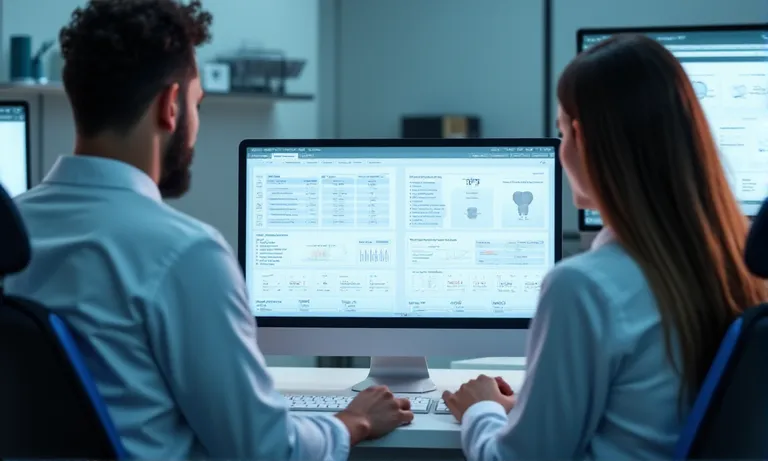
dental-lab-cost-turnaround-communication-comparison
How do cost structures and long-term pricing models differ?
Overseas dental labs often provide lower per-unit prices, but total cost depends on volume, shipping, and adjustment policies. Local labs may offer flexibility but typically at a higher base rate.
| Factor | Local Dental Lab | Overseas Dental Lab |
|---|---|---|
| Base Unit Price | Higher (often 1.5–2x) | Lower (significantly more competitive) |
| Volume Discount | Limited, customized per relationship | Tiered structure, available from low volume |
| Shipping & Handling | Minimal or included | Added cost per shipment |
| Price Stability | More variable, market-driven | More stable under annual contracts |
| Adjustment / Remake Fee | Often negotiable, may be absorbed | Transparent and predefined in SOP |
For a deeper breakdown of cost implications, this Dentistry Today comparison of outsourcing economics outlines key pricing considerations for dental labs.
What turnaround time expectations can be realistically maintained?
Turnaround time is more than shipping speed—it’s the sum of production, review, and communication. Overseas dental labs can match or even outperform local labs when processes are standardized and digital workflows are used.
- Local labs may offer 3–5 business day returns, benefiting from geographic proximity.
- Overseas labs often operate with 7–10 day windows including logistics, with some urgent cases possible in 5–7 days using express workflows.
- The key variable is clarity of the submission: unclear instructions or incomplete files impact both equally.
- Digital scanning and real-time approvals reduce back-and-forth and compress total cycle time.
How does communication responsiveness affect daily collaboration?
Consistent, predictable communication is more critical than immediate replies. Overseas labs like Raytops adopt structured communication protocols to minimize time zone friction.
- Asynchronous systems: Labs implement daily check-ins via email, portal, or Slack-style tools.
- File-based clarity: Using standardized case submission formats reduces the need for live interaction.
- Time zone bridging: Overlap windows (e.g., 2–4 PM China time = morning US East Coast) are leveraged for urgent responses.
- Dedicated account reps: Assigned project coordinators streamline feedback and adjustments.
Key Takeaways for Evaluating Lab Quality Systems
- Structured QA protocols matter more than location. Reliable labs, local or overseas, use documented multi-step processes to ensure fit, shade, and function.
- Remake policies should be transparent and consistent. Overseas dental labs often offer standardized eligibility and evidence criteria to reduce ambiguity.
- Compliance with ISO, FDA, and CE standards builds confidence. Certifications show alignment with medical-grade manufacturing and traceable operations.
- Systematic labs outperform ad hoc ones. Predictable quality comes from process, not proximity.
How does quality assurance and consistency differ across lab types?
When comparing local and overseas dental labs, quality assurance is not determined by geography but by system design. The most reliable labs—regardless of location—adhere to structured protocols, transparent remake policies, and internationally recognized compliance standards.
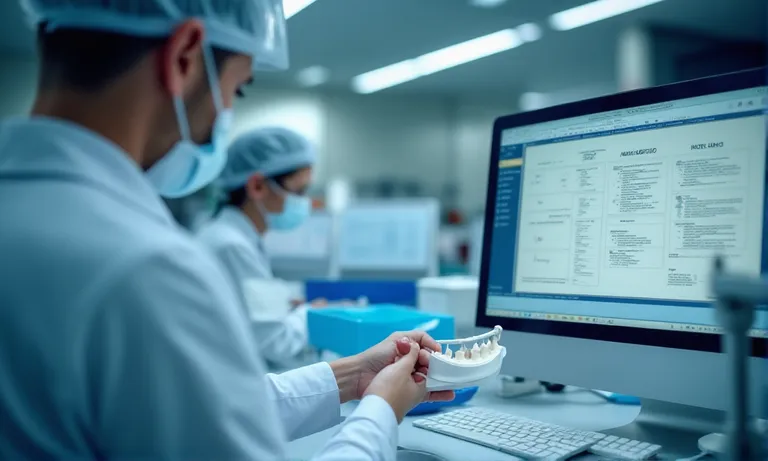
dental-lab-quality-assurance-process-check
What are the standard documentation and quality control protocols?
Quality assurance begins with standardization. Overseas dental labs working with international clients usually establish documented protocols that track every case from entry to shipment.
Step 1: Case intake with digital labeling, technician assignment, and baseline verification.
Step 2: Mid-process checkpoints for fit and contour using model-based inspections or 3D overlay validation.
Step 3: Final QA using checklists (margin integrity, occlusion clearance, shade match) signed off by a trained inspector.
Step 4: Documentation upload, including photos, batch data, and QA approval stamp before release.
These steps are often governed by ISO 13485 protocols for medical device manufacturing, enabling repeatability and accountability across batches.
How do remake and case adjustment policies compare?
The transparency and structure of remake policies significantly impact cost and confidence. While local labs may offer more informal flexibility, many overseas dental labs provide standardized remake terms that reduce ambiguity.
| Policy Category | Local Dental Lab | Overseas Dental Lab |
|---|---|---|
| Remake Eligibility | Often informal, varies by case | Defined criteria in SOP or contract |
| Time Window | Typically 5–7 business days post-delivery | 7–14 business days, depending on region |
| Fee Waiver | Case-by-case, may be waived verbally | Waived if lab responsibility confirmed |
| Required Evidence | Sometimes verbal or photo-based | Photo + model return + adjustment notes |
| Tracking & Feedback | May be ad-hoc | Logged in CRM or LIMS with resolution ID |
A growing number of overseas labs adopt structured QA review systems, similar to those used in medical manufacturing. Refer to this NADL guideline on quality tracking in dental labs for industry benchmarks.
Are overseas labs aligned with regulatory standards like FDA or CE?
Reputable overseas dental labs typically hold certifications that align with Western regulatory systems. These standards act as operational guardrails to ensure consistency, safety, and traceability.
- Many maintain ISO 13485 certification, which is the recognized global standard for medical device quality systems.
- For labs shipping to the US, FDA registration as a medical device manufacturer is required. Many also comply with Good Manufacturing Practices (GMP).
- For the EU market, CE marking under MDR Class I is standard, and case-specific documentation can be provided on request.
- Internal audits and third-party reviews ensure ongoing compliance.
✅ International quality certifications and documented QA systems can match or exceed local standards – TRUE
Overseas dental labs often undergo third-party audits and follow device-level quality systems, ensuring repeatable and transparent case outcomes.
❌ Local labs always deliver more reliable quality due to proximity – FALSE
Geographic location doesn’t guarantee consistency. In fact, overseas labs with ISO and FDA alignment may offer more systematic QA than smaller local providers.
What are the hidden operational and logistics risks in overseas outsourcing?
Overseas outsourcing offers cost benefits but also introduces specific operational risks that are often overlooked. Understanding how customs, logistics disruptions, and liability boundaries are managed is essential for building a stable and predictable supply chain.
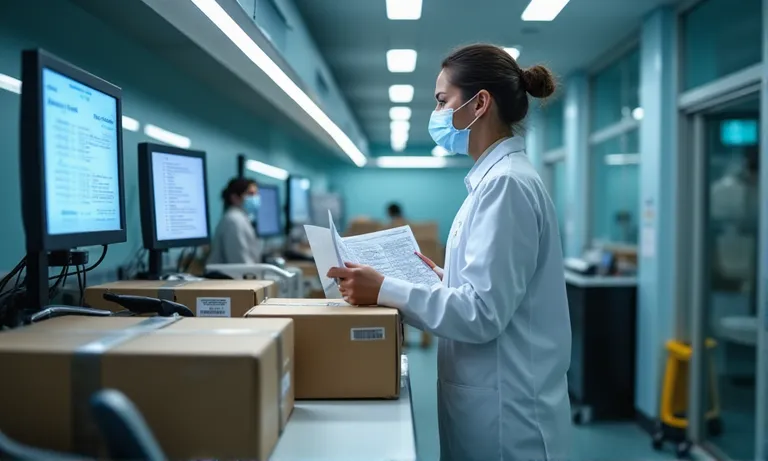
dental-lab-logistics-risk-management
What are the customs, shipping, and transit time risks?
While international shipping has improved dramatically, it still introduces variables that can impact time-sensitive cases.
- Customs delays may arise from incomplete declarations, inaccurate product categorization, or sudden regulatory updates in destination countries.
- Air freight capacity issues—especially during peak seasons or global disruptions—can lead to unexpected transit extensions.
- Carrier errors such as misrouting, incomplete documentation, or package mishandling contribute to delivery uncertainty.
- Weather, political unrest, and trade policies may also affect consistency, especially when sourcing from multiple countries.
Many overseas labs mitigate these risks by working with dental-specific logistics providers and maintaining buffer stock or expedited handling for priority accounts.
How do labs handle delays, damages, and case loss?
The difference between a minor delay and a major disruption often comes down to how the lab handles it. Reliable overseas dental labs have structured recovery mechanisms.
| Incident Type | Typical Lab Response |
|---|---|
| Minor Delay | Preemptive notice via system alerts; new ETA provided |
| Major Delay | Free express upgrade for follow-up or remake case |
| Parcel Damage | Inspection photos + full-case remake without charge |
| Lost Shipment | Courier claim + case redo with zero-cost priority |
| Client-side Delay | Auto-extension of warranty/remake window |
Effective labs also maintain case log history, including handling timestamps, scan confirmation, and resolution actions logged in CRM or LIMS systems.
What liability boundaries exist during logistics chain issues?
One of the least understood risks is liability distribution across the logistics process. Misalignment here can lead to confusion and finger-pointing when things go wrong.
- Pre-shipment liability (within the lab) is typically fully covered by the lab, including packaging errors or production delays.
- In-transit liability depends on the Incoterms used—labs using DDP (Delivered Duty Paid) often retain more responsibility compared to EXW or FOB terms.
- Post-delivery issues (e.g., case misfit due to damage) are usually assessed jointly, but structured labs offer automatic remake or refund upon documented evidence.
- Clear SOPs outlining “what happens when” are essential to prevent ambiguity. Labs should provide this in writing before onboarding.
✅ Structured overseas labs have defined SOPs and recovery protocols for logistics disruptions – TRUE
The best labs document case handling, escalation workflows, and liability boundaries, enabling fast, low-friction resolution.
❌ Once a shipment leaves the lab, it’s no longer their responsibility – FALSE
Well-managed overseas partners offer tracked handling, case replacement guarantees, and shared accountability through pre-agreed terms.
How to ensure smooth collaboration with overseas dental labs in a digital workflow?
Successful digital collaboration with overseas dental labs depends on file compatibility, feedback efficiency, and proper onboarding. These three elements ensure that digital cases move seamlessly from design to delivery without friction or rework.
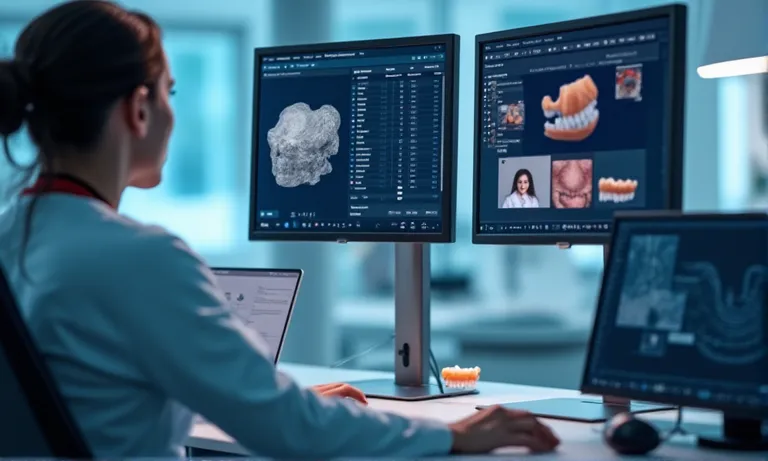
dental-digital-workflow-collaboration
Are design file types (STL, PLY, DCM) fully compatible?
File compatibility is the foundation of digital lab collaboration. Leading overseas dental labs support a broad range of file formats and maintain strict workflows to prevent data loss or misinterpretation.
- STL files are the global standard and universally accepted across scanners and CAD software.
- PLY files provide additional texture and color information—valuable in aesthetic zones—and are increasingly supported.
- DCM files (DICOM-based) used in surgical guides or planning software require integration via compatible planning systems or bridging tools.
- Labs often work with 3Shape, Exocad, and Medit systems, ensuring compatibility with most clinic setups.
- A file validation checkpoint is used upon upload to flag corrupted or mismatched files before production starts.
How is feedback and adjustment handled across time zones?
The key to managing time zone differences is a predictable feedback protocol that doesn’t rely on real-time interaction.
- Overseas labs use asynchronous review systems, where case previews and feedback requests are shared via secure platforms or cloud folders.
- Clinics can leave comments, annotations, or approval within shared case portals—reducing delays caused by email loops.
- A “day shift / night shift” relay model is used: the lab works overnight while the clinic rests, with results ready by morning.
- In urgent cases, dedicated support windows are opened during overlap hours, and team members are trained in English documentation protocols.
What onboarding and calibration steps are critical before full-scale cooperation?
Proper onboarding ensures file interpretation, shade communication, and design preferences are fully aligned before scaling collaboration.
Step 1: Calibration cases — 2–3 sample cases are submitted for trial production, covering different restoration types.
Step 2: Preference mapping — The clinic shares their design guidelines, margin preferences, emergence profiles, and anatomical priorities.
Step 3: Protocol alignment — The lab sets up custom case checklists and confirms scanner/software settings compatibility.
Step 4: Approval workflow setup — Finalized feedback loops and contact roles are defined before transitioning to full-scale orders.
✅ Digital workflows can be effectively synchronized across time zones with structured onboarding – TRUE
Clear SOPs, case templates, and shared digital tools enable predictable collaboration and minimize production errors.
❌ Time zone and file format challenges make digital collaboration with overseas labs impractical – FALSE
With proper calibration and communication tools, digital-first overseas labs can offer streamlined collaboration on par with or superior to local labs.
When is a hybrid strategy better than choosing just one lab model?
In many procurement scenarios, the optimal solution isn’t choosing between local and overseas labs—but combining them. A hybrid sourcing model balances speed, complexity handling, and cost by allocating cases based on case type and operational needs.
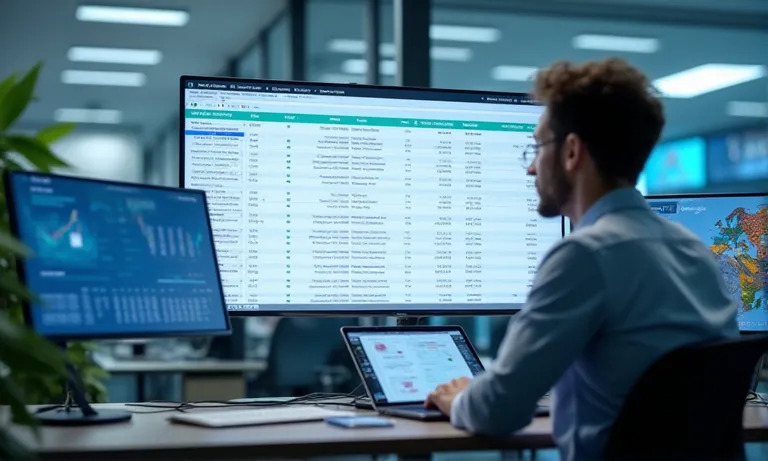
hybrid-dental-lab-sourcing-model
Should complex or esthetic cases be handled locally?
Local labs often maintain an edge in cases where chairside feedback or esthetic trial is required.
- High-touch cases, such as full-mouth rehabs or anterior esthetics, benefit from in-person shade verification and live adjustments.
- Remakes or patient-driven tweaks can be managed faster due to geographic proximity and real-time communication.
- Surgical and prosthetic coordination—especially involving implant components—may require same-day changes better handled locally.
- Subjective preferences like texture, translucency, and facial integration often depend on local lab artistry and iterative reviews.
Can overseas labs manage bulk, standardized restorations cost-effectively?
For predictable, high-volume cases, overseas labs often offer a better balance of cost and consistency.
- Posterior crowns, simple bridges, and implant restorations follow clear parameters and require less subjective judgment.
- Batch processing through digital submission portals reduces turnaround variability and increases output stability.
- Lower cost per unit allows clinics to maintain margins while meeting delivery timelines.
- Multi-unit cases with repeatable design logic can be templated and delivered reliably by trained technicians working from a calibrated SOP.
This article on strategic outsourcing models in dental restoration explains how to align case types with production partners.
How to balance cost, risk, and control across hybrid sourcing?
The key to hybrid success is developing a clear allocation rule based on case characteristics—not lab preference.
- Case classification matrix: Define which restorations qualify for overseas production (e.g., posterior, low esthetic demand, repeatable anatomy).
- Escalation triggers: Set parameters for when cases are reassigned locally (e.g., remake, esthetic dissatisfaction, unclear margin).
- Communication workflow: Establish shared visibility across vendors so your internal team can monitor status regardless of location.
- Quarterly review loop: Monitor remake rates, delivery timelines, and cost variance between channels, and adjust allocation logic as needed.
✅ Hybrid sourcing allows dental practices to optimize cost and quality across different case types – TRUE
Combining local precision with overseas efficiency lets procurement teams achieve strategic flexibility without compromising outcomes.
❌ You must choose one lab type for all cases to maintain consistency – FALSE
With defined workflows and calibration, dual-lab strategies can deliver superior consistency by aligning case complexity with lab strengths.
Conclusion: Making Strategic Lab Partnerships Work Across Borders
Choosing between a local and an overseas dental lab doesn’t need to be a binary decision. The most successful procurement strategies prioritize clarity over convenience—evaluating labs based on cost structure, communication protocols, quality assurance, and digital compatibility, not just location.
Overseas dental labs can match or exceed local counterparts in many areas when equipped with structured QA systems, standardized remake policies, and digital onboarding workflows. Yet local labs remain essential for complex, esthetic, or high-touch cases. A hybrid approach—strategically allocating cases based on complexity and turnaround sensitivity—can help clinics and DSOs lower costs, reduce remake rates, and expand production capacity without compromising control.
At Raytops Dental Lab, we support procurement teams by delivering consistent, documented, and digitally integrated collaboration. Whether you’re exploring overseas outsourcing or designing a hybrid model, our team is here to align with your workflow—one calibrated case at a time.


